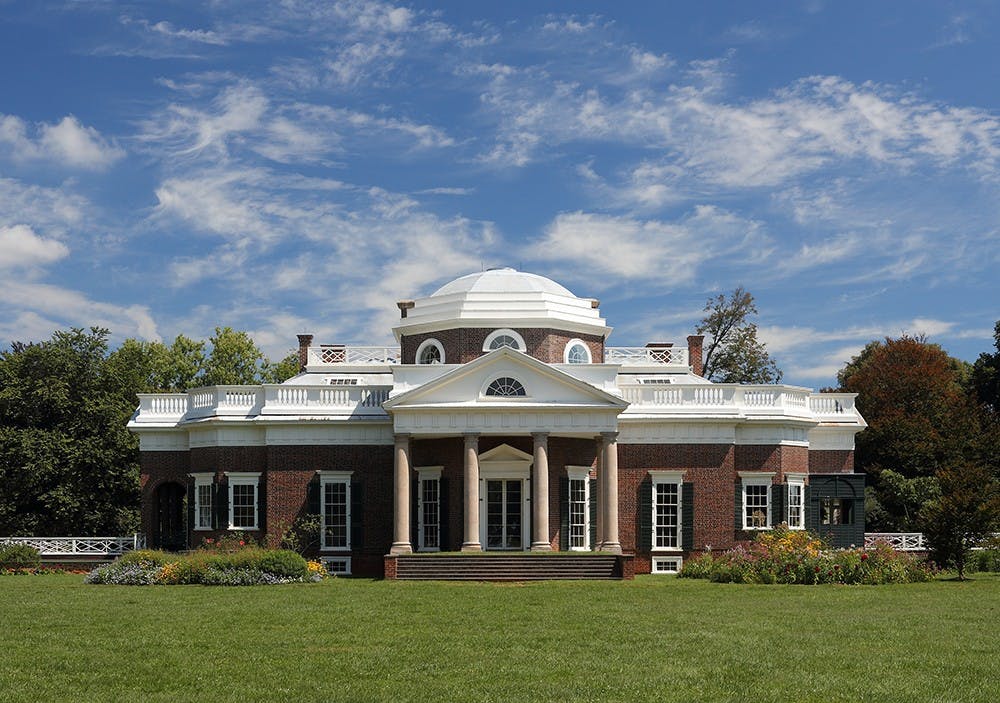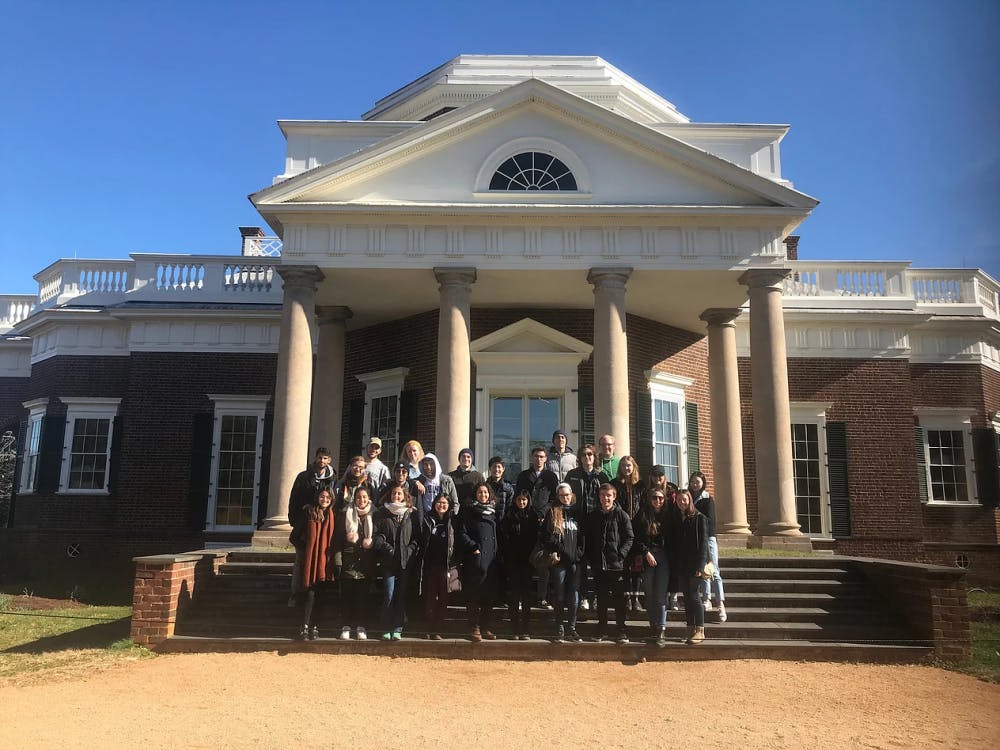As the home of the University and Thomas Jefferson’s atmospheric science innovations at Monticello, Charlottesville has a long history of tracking the weather. Today, Monticello, along with Observatory Hill, is still used as a hub for research on atmosphere and weather patterns.
Recent weather conditions in Charlottesville show a Monday in March might be 65 degrees and sunny with no clouds, while the next weekend might be 30 degrees with the possibility of snow flurries. Weather anomalies in the city of Charlottesville are being studied in connection with global weather patterns, which have become a central part of the recent climate change debate.
Monticello as a weather landmark
Jefferson’s home, Monticello, was completed during the mid-to-late 18th century on a piece of property overlooking the Virginia Piedmont and the mountains in the distance. Jefferson conducted many of his scientific experiments there.
Weather became an important topic of study for Jefferson, as he thought it was an area which had not been fully investigated by those in the scientific community, Monticello’s Curator of Plants Peggy Cornett said.
“As a man of the Enlightenment, Jefferson felt that weather was important and was an area that had not been fully discovered, so he started to take scientific weather records to try and analyze weather over time,” Cornett said.
Jefferson’s initiatives were some of the first explorations of weather, and he collected data on temperature patterns as well as rainfall totals for Monticello and the surrounding area.
“He kept a summary of his journal where he tabulated the minimum, maximum and mean temperatures of each month from 1810 to 1816,” Cornett said. “He has been described as the father of weather observation because over the course of seven years he wrote down 3,905 observations of the weather.”
To further his contributions to atmospheric science and weather observation, Jefferson traveled to Europe and conducted similar temperature readings and rain total tests, Cornett said.
Today, Monticello is still used for scientific ventures, but the data collected contributes to a national weather network which was not apparent in Jefferson’s time.
“[Monticello is] a National Weather Service rain gauge, and we actually submit weather observations to the National [Weather] Service Agency,” Cornett said. “I don’t know if Jefferson’s observations could tell us anything about global warming due to the area he surveyed, but it did show droughts and high temperatures that were not as high as we see today.”
Weather changes within a city
While environmental changes were less of a concern during Jefferson’s time, changes are occurring over many parts of the globe today, and those effects can be seen in Charlottesville and at the University.
Weather changes have been observed in Charlottesville as higher minimum winter temperatures and higher maximum summer temperatures, Environmental Science Prof. Manuel Lerdau said. These patterns have caused harm to the ecosystem surrounding Charlottesville, as many organisms moving into heavily forested areas are driving out others with established homes.
“Charlottesville faces a big challenge with invasive species of plants and insects coming in and driving out natives or even driving them extinct,” Lerdau said. “In some ways, the winter temperatures are potentially — in the short term — more significant as a problem because these low winter temperatures were one thing that held some of the invasive species in check.”
Another problem is that not all of the variables related to climate change and its impacts can be identified. Weather changes in Virginia are influenced by many other things than just the global temperature trend, Jerry Stenger, director of the Virginia Climatology Office, said.
“When we compare Virginia’s temperatures to the global average temperatures for the same period, there is a disconnect,” Stenger said. “In fact, it appears that about 25 percent of the temperature variations in Virginia over time are related to the global scale signal. That means there is 75 percent of the trend that we don’t really understand and may have other factors.”
Global trends and the future
The period from around 1974 to the present has seen the most rapid warming in global temperatures, Stenger said. These changes are the result of a multitude of factors, some having to do with urbanization, changes in variations of instrumentation over time and things Stenger said are still not understood.
Stenger said he has started research on the changes in the shifts of the onset of winter and summer, taking an objective definition of winter as the coldest 91 days of the year and summer as the warmest 91 days of the year.
“When we look at one objective measure of winter and summer that isn't necessarily related to the calendar, we see that there appears to be a shift in winter starting later and to summer starting earlier,” Stenger said. “It implies that there is a noticeable shift of what may be going on, but trying to find the relationship is anyone’s game.”
Many environmental problems are natural occurrences which have become more severe with human contributions. These problems affect rainfall, weather and temperature, factors which have been unsteady over the past few years.
“The fact that we have greenhouse gases means that outgoing radiation from the surface is trapped within the atmosphere and that allows us to have a more habitable planet,” Environmental Science Prof. Kevin Grise said. “Because human emissions are adding excess carbon dioxide into the atmosphere, the global temperature is now increasing, and this is why we are facing problems such as melting polar ice caps and rising sea levels."
While Monticello and the city of Charlottesville are only small parts of the equation when it comes to climate change, global patterns have been observed at the University and are currently being tracked by local stations and studied by professors and students alike.





